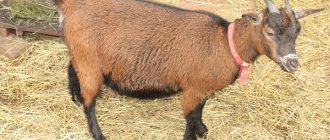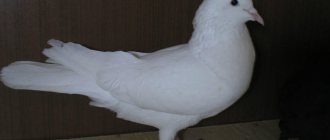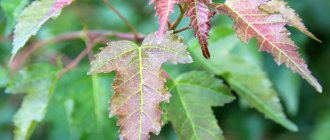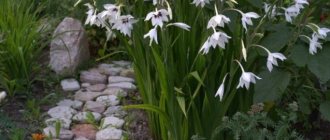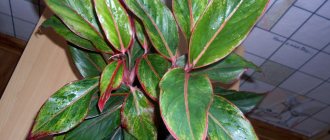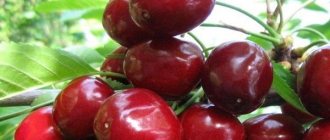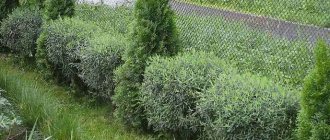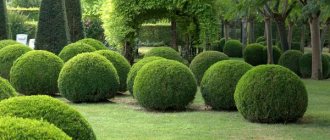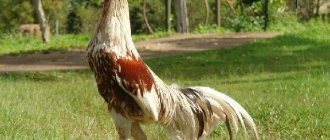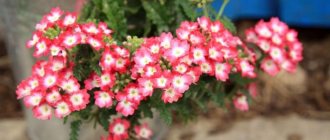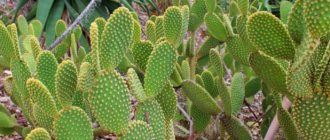Billbergia - plant care and maintenance
Billbergias are unpretentious and tolerate drafts and dry air much easier than other indoor plants.
Billbergia care and maintenance involves placing the plant in a shaded or bright place, but not under the influence of sunlight. In spring and summer, the substrate should be constantly moist, but not waterlogged. In winter, it is enough to water once a week, allowing the earthen clod to dry out slightly. For irrigation, you should use only soft and settled water at room temperature. You can water by pouring water into the funnel of the leaves of the plant with a dense rosette, and at temperatures below +20°C and after flowering you need to moisten the substrate.
The optimal temperature in the spring-summer period is +24 +28°C. In autumn, it is necessary to gradually lower the temperature to + 18 +20 °C. In the period from October to February, variegated forms must be kept at + 16 + 18 ° C, and forms with green leaves + 14 + 16 ° C and always in a bright room. Keeping the temperature below +10 +12 °C in winter will lead to disease or death of the plant.
Transplantation is carried out annually after the flowering period into a substrate of leaf, humus, turf, peat soil and river sand (1: 1: 1: 1: 0.5).
When grown, Billbergia is disease resistant with proper care and maintenance. Can be damaged by pests: spider mites, aphids, scale insects and mealybugs. Control measures: remove pests using a sponge with a soapy solution, and in case of severe damage, it is necessary to treat with karbofos or actellik, a solution of 15-20 drops per 1 liter of water.
Short description
Billbergia is an epiphyte, meaning it lives on other plants. In the wild, it prefers to live in tropical rainforests. Like other bromeliads, it is a herbaceous perennial, but in all other respects it is a completely atypical representative of the family. But it is very unpretentious - caring for drooping Billbergia is absolutely easy, and perhaps that is why they are so fond of purchasing it to decorate their home. By the way, it is believed that Billbergia brings harmony to the home.
Billbergia drooping also differs from other plants in that it blooms not in the summer, like the vast majority, but in the cold period - from October to January. Thus, it seems to warm its owner in the most persistent and severe frosts, giving warmth and a reminder of the hot, colorful summer.
What difficulties can there be with Billbergia?
The plant will grow healthy and bloom profusely if you follow the rules of caring for it. If you take it out into direct sunlight, the shoots will get burned. They appear as brown or rusty spots.
If the plant is watered too much, it may also die. Root rot develops and shoots rot. When you are about to replant a plant, be attentive to the soil. The soil for planting is prepared either according to the recipes written above or purchased in the store.
Caring for the plant is easy. If you leave for a week on business and there is no one to look after the flowers, the bush will not die during this time. Billbergia tolerates slightly dry air and temporary lack of water, but place the container with it in a bowl with damp grass or moss. Billbergia generally adapts perfectly to the domestic climate, rarely gets sick and will beautifully complement your interior design.
Description
Billbergia is native to the subtropics of South and Central America. In its natural environment it can also be found in Argentina, Mexico, Brazil and Bolivia, where it lives on tree trunks. In this regard, the root system of the plant is not large - it uses it only for attachment, and receives nutrients and water through the leaves.
In indoor conditions, the flower usually grows up to 45-50 cm. It is not easy to determine whether it belongs to the Bromeliad family. The similarity can be seen only in the funnels of the leaves and their dense texture.
The leaf blades are long (up to 40 cm), narrow and have a pointed tip, so in appearance they resemble cereals or bulbs. Their surface is completely covered with small scales, and the edges are equipped with spines or denticles.
Depending on the type of flower, the leaves can be solid dark green or variegated. There are also varieties covered with a bluish waxy coating, designed to protect the plant from excessive evaporation of moisture.
Inflorescences appear twice a year - in spring and autumn - and remain on the plant for 3-4 months. They are drooping panicles (spikelets) formed on long peduncles growing from the center of the rosette of leaves.
The buds are small and arranged in a spiral. Their petals can be colored in a wide variety of shades: from pinkish-purple to yellowish-green. At the same time, deep pink or red bracts give additional brightness to the spikelets.
Billbergia blooms at the age of 2-3 years, and after this process is completed, the rosette from which the peduncle emerged dies. However, before this, she manages to release a large number of side shoots, giving rise to new plants.
Botanical description
Billbergia is a herbaceous perennial with very good decorative properties. Constant exposure to arid regions could not but affect the appearance of the flower, which is why it acquired a tubular rosette of leaves designed to store moisture. The height of the bush with well-organized care can be 1.5 meters.
Billbergia leaves are hard, have thorns or denticles; in some species the surface is covered with a special coating that resembles wax and protects the plate from liquid evaporation. A representative of the flora becomes especially attractive during the flowering period (in nature this happens twice a year, in autumn and spring). The flowers, painted bright red or pink, are collected in unusual-looking inflorescences, reminiscent of a head down.
During the flowering period, the bush has many side shoots, both above-ground and underground, with fresh rosettes forming at their ends. When flowering ends, the mother bush dies, and the young ones take root and begin their independent growth.
Where to plant Billbergia?
It is best to plant Billbergia drooping in a flower pot so that the rosettes hang freely.
Photo: Pinterest.com Like other tropical plants, Billbergia is demanding on the soil. The soil in the pot should be loose, peat-leaf, with the addition of moss fibers and coarse river sand.
The pot for Billbergia should be of medium size: containers that are too large or too small are contraindicated. The fact is that the plant must have time to “drink” the water before it turns sour in the soil. The soil should have time to dry out between waterings.
The recommended pot size for an adult plant is 25-30 cm. To make replanting easier, choose pots whose top diameter is 3-5 cm larger than the bottom diameter.
A mixture of high peat, leaf soil, moss and humus should have a pH of 5.0-5.3. The optimal pH value is a guarantee of successful cultivation of Billbergia. Both acidic and alkaline soils are contraindicated for all bromeliads.
If it is not possible to make the mixture yourself, it is recommended to buy a soil mixture for orchids or aroid plants.
Types and varieties of Billbergia
Most often, the following types of Billbergia are grown in indoor culture:
Billbergia nutans
Or “queen’s tears” - a plant that reaches a height of 35-40 cm and forms a rosette of leaves with a drooping flower arrow up to 80 cm high. The inflorescence consists of greenish-purple flowers and bright pink bracts.
In the photo: Billbergia nutans
Billbergia magnifica
This is a plant from the southeastern regions of Brazil, forming a rare elongated rosette of large, hard, narrow, spiny leaves up to 70 cm long and about 8 cm wide with a pointed tip. The leaves are painted bluish-green and covered with transverse light stripes. The drooping peduncle of this species, about 30 cm high, bears a fleshy inflorescence up to 30 cm long of flowers with spiral-shaped blue petals covered with large pink bracts.
Billbergia vittata
It differs from other species in the variegated color of its leaves in different variations from olive to bronze. The undersides of the leaves are covered with silvery stripes. The flowers of this species are bright blue, and the bracts are pink.
In the photo: Billbergia vittata
Billbergia viridiflora
This is a large epiphyte that grows in Southern Mexico at the foot of the mountains and near forest rivers. The plant has a dense rosette of dark green leaves with jagged edges. The leaves, like the peduncle, are covered with grayish scales. The flowers consist of green petals up to 5 cm long.
In the photo: Green-flowered Billbergia (Billbergia viridiflora)
Zebra Billbergia (Billbergia zebrina)
A plant with purple-bronze leaves with large transverse stripes. The flowers form a loose raceme with bright pink bracts.
In the photo: Zebra Billbergia (Billbergia zebrina)
Billbergia saundersii
This is a small epiphytic plant with a narrow rosette of leaves covered at the edges with thorns, colored green on top with a bronze tint, and the leaves below are red, painted with an intricate pattern of spots, stripes and dots of a pinkish-yellow hue. Covered with broadly lanceolate leaves, a cascading peduncle bears a yellow-green-blue inflorescence.
In the photo: Billbergia saundersii
Billbergia pyramidalis
Originates from the tropics and subtropics of Venezuela, Brazil and the Antilles. Its leaves, up to 80 cm long and up to 6 cm wide, form a narrow funnel-shaped rosette of wide-linear leaves pointed at the end, and a pyramidal inflorescence up to 15 cm long with small erect pink bracts, twisted at the base, and pale red flowers covered with light felt pubescence. This species blooms from mid-spring to mid-summer.
In the photo: Billbergia pyramidalis
Euonymus (Euonymus) – care, photos, types Brachychiton (Brachychiton) – care, photos, types
After this article they usually read
Add a comment
Types of Billbergia
- Billbergia pyramidalis
is a species that grows on the soil surface. A rosette in the shape of an elongated funnel is formed from a small number of leaf plates. The leaf blades are distinguished by their broad linear outlines and having a pointed tip at the top. Their length reaches 60–80 cm with a width of up to 5–6 cm. The color of the leaf surface is bright green. The bracts practically grow straight up, have a pink tint and are strongly densely curled at the very base of the inflorescence. The inflorescence group is distinguished by straight or almost straight growth, and can be pyramidal, corymbose or short-cylindrical in shape. Its length does not exceed 15 cm, with dense white-felt pubescence. The bracts are quite small. Flowers are attached to short stalks. The buds have fused sepals, painted in pale red tones, the petals are shaped like reeds of a bright carmine-red color, their length is much greater than the size of the stamens. The flowering process extends from mid-spring until July. - Billbergia nutans.
It is a plant with an epiphytic growth form, which also forms an elongated leaf rosette. Only this variety has narrow leaf blades. They are linear in shape, tapering towards the apex. Their length varies within 60–70 cm with a width of only 1–2 cm. The edge is decorated with spikes. The shade of the foliage is green, but if the lighting is too strong, then a reddish or bronze color is mixed in. The flowering stem is thin and long, drooping in appearance. Bracts leaves are pink in color. The flowering process occurs in winter. - The magnificent Billbergia (Billbergia magnifica)
has an elongated rosette. The outlines of the leaves are linear with a point at the apex. The surface of the leaf plate is dense and hard, the edge is decorated with spikes. The length of the leaf reaches 70–80 cm with a width of 6–8 cm. The color of the foliage is bluish-greenish, with a pattern of light-colored transverse stripes running along the entire surface on the outside. The inflorescence is loose, drooping, reaching a length of 20–30 cm. The flowering stem (axis) has strong pubescence. The leaves on the peduncle and the bracts of the lower buds are large, oval or slightly elongated. In appearance they are asymmetrical and have slight pubescence. Flower petals are linear; during flowering they can curl into a spiral shape. Their length reaches up to 7 cm. At the very top they are colored blue, the anthers are the same. The fruit ripens in the form of a berry. The flowering process occurs in summer. - Billbergia viridiflor
is a large epiphyte whose leaf rosette is denser than that of the variety described above. Linearly elongated leaves have a pointed apex and a serrated edge. Their length is 60–70 cm with a width of up to 5–6 cm. The color of the foliage is bright green, the entire surface is covered with small gray scales. The bracts are colored bright pink and grow straight. The petals of the bud reach 4–5 cm in length and their color is green. Flowering lasts from early spring until the end of the summer months. - Zebra Billbergia (Billbergia zebrina).
Under the bright rays of the sun, the leaf plates of this flower gradually begin to acquire a purple-bronze color with a beautiful pattern of transverse silver stripes. The flowers are collected in a loose racemose inflorescence. The flowering stem has a pink color and bright pinkish bracts. - Billbergia vittata
Flowers are dark blue, located on a pink flowering stem; it is decorated with bract petals with a rich bright pink color. - Billbergia Saundersii.
The height of the rosette is 30 cm. The color of the leaves is green-bronze above, reddish-brown below, there are also yellowish-pink spots, specks and stripes.
Description of Bilbergia with photo
We offer a description of indoor Billbergia flowers. The flowers range in color from dark purple to almost colorless. They can vary in width and aroma (some have a cloying, pungent smell, while others have almost no sense of it). Based on the shape of the leaves, Bilbergia can be divided into two groups - Bilbergia with curved foliage and Helsodya with coil-shaped petals. We invite you to look at indoor Billbergia flowers in the photo:
At the back, the leaves are hard with a skin that has a bright color or a monochrome color. On the sides, each leaf is covered with small scales, and the leaf itself can have absolutely any shape, for example, foliage in the shape of a triangle and a narrow line is very popular among fans of indoor plants. The leaves in inflorescence are large in size and picturesque in color. The seeds are stored in hard berries just below the flowers. They grow quietly in rocks, but also feel comfortable in the garden - it is considered one of the most unpretentious indoor plants. Due to the fact that new shoots always appear around the trunk, billbergia looks like a huge, lush shrub. It is composed of several independent rosettes, reaching a length of up to one meter.
Billbergia drooping and its photo
It is one of the subspecies of bromeliads. Billbergia drooping grows in Brazil, Argentina and Uruguay. This flower is most often used as a houseplant; it is probably one of the most popular flowers of the bromeliad family. They can grow almost anywhere, be it a pot or a bed in the garden, they have several roots that are easy to fix and they will receive the necessary amount of moisture and nutrients from the air. They tolerate high humidity well, so the cups should be filled with water when it rains. Look at the photo of drooping billbergia:
The leaves are dark green in color with small thorns and can be no more than one meter long; the bottom is most often covered with gray scales (in good light they become bronze or red in color). The inflorescence is loose with small branches that bear only a couple of flowers. In spring and summer, be sure to feed the plant with a balanced, diluted liquid fertilizer. It will be great if it contains bromeliad epiphytes.
Magnificent Bilbergia and its photo
The plant has small but long leaves up to one meter high, bluish in color with white and light green veins. They are erect and form a tubular rosette. The flowers themselves are collected in a small drooping inflorescence up to 30 centimeters long. The bright pink bracts are circular or oval shaped and slightly drooping. Blooms exclusively in summer. Look at the photo of the magnificent Billbergia:
Pests and diseases of Bilbergia
Despite the fact that the plant is resistant to diseases and insects, there are parasites that spoil the plants. If detected in time, they do not pose a serious threat.
Shchitovka
These aphids can be found on leaves from the inside or outside of the plant. Affected shoots turn yellow and gradually die. Pest control is not difficult. To do this, you need a solution of the drug Actellik, a sponge and a spray bottle. It is prepared simply: 20 drops of the drug are dripped into a liter of water. Moisten a sponge in this solution and remove all detected pests. Next, you need to spray all the plants with the solution. Usually within 1-2 procedures the pests disappear completely.
Mealybug
This parasite eats leaves and leaves its secretions on them. A soot-like fungus settles on them and multiplies quickly. A damaged plant will be weak, lose its decorative effect, and the leaves will turn yellow. If you do nothing, the plant will quickly die.
You can get rid of the pest using a comprehensive method. First, wipe the entire plant with a sponge moistened with alcohol or a solution of laundry soap. Then you need to spray it with Actellik, or another chemical against pests of indoor flowers. If you have done a good job and there are no pests left on the leaves, then one procedure will be enough.
Red spider mite
This pest can live on any side of the leaves. The affected shoots are all shrouded in cobwebs, turn yellow and lose their quality. The plant grows very poorly and looks the same. If left untreated, the mite kills the plant in 1-2 months.
It's easy to get rid of it. You must first collect the cobwebs, then treat the leaves with a solution of ordinary soap and spray them with Deciss from a spray bottle. Treat your plants regularly and there will be no problems with mites.
Aphid
It occurs due to a violation of the watering regime and settles on the leaves above. Insects feed on the sap of the bush. As a result, the nutrients obtained from the roots are used not for the development of the bush, but for feeding the aphids. The parasite larvae grow quickly and develop into new pests.
As a result, it sucks out all the juice from the shoots, the leaves turn yellow and die. You can change the situation by removing all pests with a sponge and soap and treating them with Actellik solution. The solution is prepared as in the case of scale insects. For one liter of water, take about 20 drops of the drug and mix. Spray the bush with the resulting solution.
Signs and superstitions
According to the ancient Chinese teaching about harmony and energy exchange, Feng Shui, Billbergia is considered a symbol of wisdom and spiritual balance. She is able to absorb negative energy, saturating the home atmosphere with goodwill, leveling conflict situations.
Feng Shui experts recommend placing a flower in the work area for people engaged in mental work and schoolchildren. The plant promotes better concentration and perseverance. Thanks to its positive influence, the ability to remember and assimilate new information improves.
Epiphyte benefits people with respiratory problems. Wide leaves absorb harmful impurities in the air and saturate it with phytoncides.
A tropical flower is an ideal option for a novice gardener; it does not require much time and effort to care for. Thanks to its biological feature (to grow on a support), the flower will become an original decoration for your home and office interior. r]
Maintenance and care
Billbergia belongs to the cohort of the most flexible green “pets”; it has adapted well and does not require unnecessary attention and care. With all its advantages, flower growers, especially those just beginning to master the secrets of proper care for exotic plants, would do well to gain new knowledge that takes into account the experience of other people’s mistakes.
Most often, we keep Billbergia in flowerpots located on the windowsill. This method is used the old fashioned way, without taking into account the natural capabilities of plants of the bromeliad family.
Since Billbergia is an epiphytic houseplant, it is correct, but funny for our area, to grow it on a so-called “bromeliad tree” made from ordinary branched driftwood. To place a flower in conditions close to natural, it is necessary to free the root system, completely envelop it in sphagnum moss and secure it to the branches of driftwood. It is absolutely possible to create a more compact installation with the help of family craftsmen that will organically fit into the interior of the apartment. You can simply install it on a shelf or hang it on the wall. The most difficult task in this undertaking is to achieve optimal moisture content for the moss.
Caring for Billbergia at home
How to grow billbergia
Billbergia easily adapts to almost any conditions, but if you want to see it in the best shape, take the trouble to create conditions close to natural for it.
The billbergia flower develops equally well both on illuminated window sills and in the back of the room, so it is often used to decorate the interior and create flower arrangements. However, in bright light and partial shade it still blooms brighter.
As for temperature, the plant will be comfortable in conditions familiar to humans, as long as the room is not cooler than 12˚C. But during the flowering period, it is advisable to lower the temperature by 2-3 degrees.
The houseplant Billbergia enjoys spending the warm season outdoors, therefore, as soon as warm weather sets in and the threat of return frosts has passed, the plant can be placed in the garden, on the balcony or on the terrace, where it will soon begin to grow young rosettes. The main thing is to protect indoor billbergia from drafts, sharp gusts of wind, direct midday rays and precipitation.
Billbergia develops, replacing faded rosettes with newly formed ones, so you need to manually cut off old rosettes 4-5 weeks after flowering so that they do not slow down the development of young promising children.
Watering and feeding Billbergia
The soil in the pot with Billbergia should be kept slightly moist, avoiding stagnation of water in the roots. Between two waterings, the substrate in the pot should dry to a depth of 2-3 cm. Humidification of Billbergia is carried out using the method used for all bromeliads: settled or filtered water at room temperature should be poured into the center of the leaf funnel.
The difficulty of such watering is that you then need to constantly monitor the water level in the funnel and drain the excess in a timely manner. In addition, if the plant is kept in cool conditions, moisturizing using this method is excluded; you should also not pour water into the outlet when the flower is at rest. In these cases, you should simply moisten the soil in the pot.
In winter, when daylight hours are shortened and the temperature drops, Billbergia is watered no more than once a week.
At home, Billbergia needs high air humidity, so it will be grateful for spraying the leaves with cool, settled water, especially when the room temperature is above 23˚C. During flowering, Billbergia can be placed on a tray with wet pebbles, damp moss or expanded clay. These measures to increase air humidity are usually quite sufficient.
The substrate in the Bilbergia pot is fertilized not only during the active growing season, but also during the dormant period, since the plant loves stable conditions. From the beginning of the growing season until the end of flowering, Billbergia is fed twice a month with special mineral complexes for bromeliads. During the dormant period, it is enough to fertilize once every 5-6 weeks.
It can be used to feed Billbergia and fertilizer for flowering indoor plants, but the concentration of this solution should be two times weaker than indicated in the instructions.
Too much nitrogen content in the substrate can cause the death of the epiphyte, so complexes with a standard proportion of elements cannot be used to feed Billbergia.
Transplantation and propagation of Billbergia
Billbergia is replanted as needed and combined with propagation of the plant by daughter rosettes: active flower growth requires regular planting of children. As soon as the young rosettes become too crowded in the pot, and the roots of the bilbergia begin to crawl out of the drainage holes, you need to separate the children from the mother plant and plant them. They do this from March to August.
Containers for Billbergia should be chosen larger, since the plant is actively growing: the pots should not be so deep as wide. Take a new pot 2-3 cm larger in diameter than the old one. The composition of the Billbergia substrate required is quite specific: with a rough texture, containing only a small amount of turf soil and having a pH value close to 5.0 pH. Billbergia grows well in a mixture of equal parts of leaf soil, moss, humus and high peat.
When replanting, it is not necessary to completely clear the roots of the plant from the old substrate. Just inspect them and if they look healthy, replant the plant in a new pot, filling the remaining space with fresh potting medium. If there are rotten areas on the roots, first cut them out with a sharp, sterile instrument, treat the cuts with charcoal powder, and only then plant the flower in a new container.
Temperature and humidity during care
Billbergia loves warmth, but not heat. During the active period, you need to make sure that the room is warmer - within 25-28 degrees, during the rest period - cooler, from 15 to 18 degrees. The latter is a must, since it is the coolness that stimulates the development of the kidneys. However, you should not be zealous and lower the temperature too much: Billbergia nutans (this is the Latin name of the flower) may get sick and die.
Air humidity should be maintained between 70-80 percent. If it’s summer outside or the room is always hot and dry, the flower should be sprayed regularly (except for the flowering period). If the plant lives in a pot, you can place the flowerpot on a tray with water.
How to care for indoor Billbergia
Billbergia flower photo
Air temperature, humidity and lighting
Compared to other plants of the Bromeliad family, Billbergia is less demanding in care. It tolerates dry air more easily, can withstand air temperatures of + 2-3 ° C, small drafts will not destroy it, but it is still not worth overusing. Grows well in greenhouses and terrariums.
Lighting needs to be bright and diffused. On southern windows at midday, shade from direct sunlight - just cover the window with translucent paper. When placed on a north window, it may not bloom. The best place would be windows facing west and east.
You can place it outdoors for the whole summer, protecting it from direct sunlight or precipitation.
The optimal air temperature in the summer season is in the range of 20-28 °C. By autumn, lower to 18 °C. During the dormant period (October-February), an air temperature of about 15-17 °C is desirable for forms with green leaves, and 17-18 °C for variegated plants. Cool wintering stimulates flowering.
Watering and spraying
In the summer, regularly moisten the substrate, avoid overmoistening. You can use bottom watering or pour water into leaf funnels, but the air temperature should be above 20 ° C and the water should not stagnate. Prolonged stagnation of water combined with low air temperature leads to rotting or even death of the plant.
With the epiphytic method of cultivation (placed on a bromeliad tree), once every 10 days the plant should be removed from its support and immersed in settled water to saturate. Let the excess water drain, then return the billbergia to its place.
In autumn-winter, when the air temperature is below 20 ° C, water moderately, allowing the top layer of soil to dry out. If the air temperature is above 20 °C, you can occasionally pour a small amount of warm water into the leaf funnel.
Billbergia can tolerate dry air, but it is better to maintain high humidity. Spray a couple of times a day, periodically place on a tray with damp expanded clay, moss, and pebbles. It is better not to spray during the flowering period - drops of water falling on the inflorescences may remain stained.
Feeding
During the period of active growth, every 2 weeks apply special fertilizers intended for Bromeliads or fertilizers for decorative flowering indoor plants in half the concentration. Avoid excess nitrogen.
Transfer
Flowering species must be replanted annually after flowering, the rest - as needed.
Grows well in hydroponics. It is best to grow in a special substrate for Bromeliads. A suitable soil mixture will be: mix turf, leaf, humus soil, peat in equal proportions, add a little sand. You can mix chopped moss, leaf soil, peat, sand in a ratio of 2:2:1:1.
Use a wide, but not deep, pot. After planting, it is necessary to water moderately for 2-3 weeks and postpone the application of fertilizers.
Diseases and pests of Billbergia
The plant is susceptible to infection by fungal diseases. They usually appear in the autumn-winter period when the flower is in a cool room with high humidity and lack of light. The main signs of damage are:
- general withering;
- deformation of parts;
- slower growth and development;
- the appearance of brown spots;
- leaf dying.
It is not always possible to cure a plant
Therefore, it is important to prevent stagnation of moisture in the soil and overcooling of the bush. It is also advisable to use fungicides for preventive treatments once a month.
When growing Billbergia, you may also encounter thrips, mealybugs, spider mites and aphids. To prevent this from happening, it is recommended to follow the rules for maintaining the plant and, as a preventative measure, conduct weekly inspections of the leaves for infection.
You can determine that harmful insects have settled on a flower by the appearance of:
- spots;
- cobwebs;
- holes;
- sticky or grayish-white discharge;
- dark spots.
To combat parasites, you should use a soap solution and special products - insecticides.
Other problems:
- sockets do not hold their shape - insufficient lighting;
- the death of the rosette is a natural process after flowering or a consequence of waterlogging of the substrate;
- the appearance of brown spots on the leaves - sunburn;
- drying of the tips of the leaf plates - stagnation of liquid in the funnel or the use of hard water for irrigation.
Billbergia can bring the owner not only aesthetic pleasure, but also benefits. It releases special volatile substances that have a phytoncidal effect - they destroy harmful microorganisms. The plant also helps absorb loud sounds and create the right energy in the room.
Diseases, pests and difficulties
The plant is quite hardy and rarely suffers from diseases.
Insects that the owner of a drooping Billbergia may encounter include spider mites, mealyworms, and aphids. When they appear, the plant should be treated with a soap solution or actellik.
The following growing difficulties are possible:
- If the tips of the leaves begin to dry out, you should spray the rosette with water.
- The formation of brown spots on the leaves occurs due to exposure to the rays of the sun; the plant must be rearranged. If the soil is too waterlogged, replanting it in a new pot will help.
- The leaf rosette is rotting - it is necessary to reduce watering.
- Leaves become limp, droop, or grow poorly due to insufficient light.
All home flower garden owners want their “pets” to please the eye with their bright blooms. But achieving this can sometimes be difficult. First of all, it is necessary to provide the plants with normal lighting. It is unpretentious and will not die in dark areas of the apartment, but in order for bright spikelets to appear, it should be provided with more light.
In addition, billbergia may not bloom due to insufficient watering or lack of feeding.
It is also important to maintain the temperature regime, so the plant will bloom if in winter the temperature in the room where it grows is reduced to 18 °C and the number of waterings is reduced
Caring for Billbergia is simple, even a novice gardener can handle it, but it is important to follow the watering technology and do not forget to feed the plant. In this case, it will delight you with amazing flowering
Caring for Billbergia at home (with photo)
Of all the bromeliads, Billbergias are the most unpretentious. They do not require high air humidity and are not afraid of drafts. Perfect for beginner gardeners.
Billbergia grows well in terrariums and warm greenhouses. The plant is very beautiful and can adequately decorate a room, large hall, or winter garden.
The plant can also be planted in the garden, but in a place protected from wind and sun. Under optimal climatic conditions it is used for external landscaping.
See how Billbergia is cared for in the photo, which shows the main transplantation and propagation operations:
Watering. Humidity is maintained at moderate or higher levels; spraying is required. Watering is sufficient, moderate in autumn. Like most bromeliads, Billbergias are watered directly into the outlet, but only if the air temperature is above 20 °C; at lower temperatures, only the soil in the pots is moistened. For irrigation, you must use well-settled tap water at room temperature.
Temperature. Winter minimum 13°C. At lower temperatures (but above 0°C) it will not die, but it will grow or bloom worse.
Substrate. It can be grown not only in pots, but also on driftwood and blocks of tree bark. In order to transplant or grow a young plant, it is recommended to use a soil mixture that consists of equal parts of leaf soil, pre-crushed pine bark, peat and dry cow manure with the addition of finely crushed charcoal and granulated perlite.
Feeding. Fertilizing in the summer is carried out with a solution of mineral or organic fertilizers every two weeks (best of all with liquid fertilizer containing organic matter).
Bloom. The first flowering can be expected in about three years. Some time after flowering, the rosette dies and a new plant grows from a creeping stem or rhizome, blooming the next season. Old plants produce many narrow funnel-shaped rosettes, which often bloom simultaneously. It is recommended to cut off the old rosettes 1–2 months after flowering.
Reproduction. Offshoots that appear around an old faded rosette. Separate them from the parent plant when they reach half its height. It is recommended to sprinkle the cut areas with powdered charcoal.
Caring for Billbergia at home in the photo illustrates all the basic agricultural techniques from planting to fertilizing:
Reproduction is possible by seeds sown on clean sphagnum.
Pests and diseases. Spider mites and scale insects cause great harm to the plant. If improperly cared for, Billbergias will become spotted.
This stemless plant with a dense rosette of ribbon-shaped leaves slightly narrowed towards the apex is epiphytic and in natural conditions prefers to grow on tree branches. In indoor conditions, it feels great in hanging flowerpots. Meet Billbergia drooping.
I want to tell readers about an unpretentious flower called drooping Billbergia. I got this flower from a friend. The plant is light-loving, but can also grow in partial shade. In our house, Billbergia develops well and blooms annually on an east or west window, where it has enough daylight and no direct sunlight. In the summer, we take it out into the fresh air - into the yard, and shade it from the sun. Billbergia is also afraid of drafts. Bilbergia has long (up to 70 cm), narrow-linear, finely toothed, leathery leaves at the edges, their color is grayish-green, and the underside is gray.
billbergia-nutans photo
The leaves are collected in elongated rosettes that look like a funnel for water or a tall glass. From this funnel the inflorescence appears. When it just begins to form, a bud first appears, then it begins to grow and looks like an elongated pink cone. When the peduncle reaches 40 cm, it gradually begins to bend to the side and then throws out a brush of small flowers with blue, green, purple tips of the petals. Droplets of nectar flow from the flowers, which is why the plant’s popular name is “queen’s tears.”
The process of emergence and formation of the peduncle and flowering itself takes about a month. After flowering, the old rosettes die off) and I remove them by cutting off the upper part above the soil level with a sharp knife. The plant itself grows and produces many offspring - children - they can be easily separated for propagation of the flower. According to my observations, an overgrown plant with unseparated children blooms better, because each rosette produces one peduncle.
Watering
I water the flower with boiled water. In the cold season, I pour water into the central funnel at a level of about 2 cm. When the temperature is at least 20°, there should always be water in this funnel and it should be added as it evaporates. In summer, I keep the soil in the flowerpot moist by spraying. But during flowering, only the air around the plant should be humidified, since water that gets on the peduncle can cause rotting. You can place a container of water next to the flower. We place our plants near aquariums. In winter, we reduce watering, but do not allow the soil to dry out. We do not pour water into the outlet. Billbergias overwinter on an insulated balcony, where the temperature is kept at 12-14°.
Transplantation and propagation
The root system of the plant is small, Billbergia grows slowly, so it does not need replanting in spring and autumn. I simply cut out the old sockets, and the empty spaces are gradually filled with new offspring, which can later be used for reproduction. We take the lateral shoots, the leaves of which have already reached a height of 15 cm, plunge the knife into the ground and carefully remove the plant with its rhizome. Since the root system is poorly developed, this procedure is not particularly difficult.
If there are a lot of old rosettes in the flowerpot, or the soil needs to be replaced, or the flowerpot has become cramped, then remove the entire plant from the container and cut out the young plants with roots with a knife. Then we separate the children from each other, and sprinkle the cuts with crushed coal, let them dry in a bright place for 2-3 hours and plant them in small and shallow flowerpots, in which drainage must be done.
billbergia-pyramidalis photo
You can also buy ready-made soil for bromeliads in the store. After planting, you need to water the plant and cover it with polyethylene to maintain moisture and improve the rooting process. I once had to carry out such a procedure in the summer, but all the children took root. By the way, young plants will bloom in a year or two. I feed Billbergia starting in spring, 1-2 times a month with mineral fertilizer. By September, when the flower buds appear, I stop feeding.
Pests
The pests of this plant are scale insects and mealyworms. You can fight them - I use special drugs or prepare my own remedies. I do this: I fill half a liter jar with the peel of any citrus fruit, add water and let it sit for 10 hours, then I pour it all into a saucepan and put it on the fire, after boiling I keep it on the fire for another 10 minutes and remove it. When the solution has cooled, I filter, add water to a full liter jar and treat the affected plants.
(Billbergia zebrina) photo
Or I take 300 g of wood ash, add 2 liters of water, put it on the fire and after boiling, keep it for another 5 minutes, then filter, add water to 10 liters (total volume). This product can be used against any pests.
Well, if pale brown spots appear on the leaves, it could be a sunburn. If the tips of the leaves of the Bilbergia plant are dry, it means that the air in the room is dry and it needs to be humidified.
Types of Billbergia
- Billbergia nutans is one of the most unpretentious and therefore popular species. A low-growing plant with a loose rosette of hard gray-green or silvery leathery leaves. The pink drooping peduncle is topped with a racemose inflorescence of small greenish flowers with purple tips of the petals. The bracts are bright pink.
- Billbergia windii is very similar to drooping Billbergia, but it is more powerful. The leaves are dark green, the flowers are large, located on long (up to 50 cm) peduncles.
- Billbergia pyramidalis has a rosette of 12 wide-lanceolate light green leaves, the length of which can reach 60 cm. Reddish flowers with purple tips of the petals are located on a straight pink peduncle. The plant was brought to Europe from Brazil.
- Zebra-shaped Billbergia (Billbergia zebrina) is very decorative. The leathery, elongated leaves have shades ranging from olive green to silver. Blue flowers, collected in a loose cluster, adorn the pink peduncle.
- Billbergia vittata is very similar in appearance to zebra-shaped Billbergia: the leaves are the same color with gray transverse stripes on the reverse side, but the flowers are dark blue, also located on a drooping peduncle. Found wild in the forests of Brazil.
VIDEO: Billbergia nutans
Bilbergia: care at home
Temperature
Billbergia prefers moderate temperatures; in summer, 22-25°C is optimal. Does not tolerate dryness and heat above 28°C. In winter it is cooler, about 18-20°C, minimum +13°C. Avoid placing bromeliads in a drafty area, such as near an air conditioner.
Lighting
Bright indirect light, Billbergias need some direct sun in the morning or evening. Grows well on eastern and northern windows. It may be too dark on the northern window sill; on the southern window shading is needed from 11 a.m. to 3 p.m. in the form of light tulle.
Watering
Not all Billbergias have a well-defined rosette of leaves, so they can be watered directly into the soil, like ordinary indoor plants - in spring and summer quite abundantly, after the top layer of soil has dried. In winter, water limitedly or moderately depending on the temperature, after the soil has dried almost completely in the pot.
Fertilizer
Fertilizer feeding is carried out in spring and summer. For fertilizing, special fertilizers for bromeliads are used. You can use fertilizer for other flowering indoor plants at half the dose or fertilizer for orchids (at the recommended dose). Feeding is carried out after 2 weeks.
Air humidity
Billbergia needs to be sprayed periodically, the optimal air humidity is 60%. Protect the plant in winter from dry hot air from radiators.
Transfer
Every year after flowering, pour into soil consisting of 1 part light garden soil, 2 parts peat or leaf soil, 1 part humus, 1 part vermiculite, sand or pine bark. You can use a store-bought potting mix for bromeliads. The planting container should not be too deep; it is better to use wide bowls. You need to add high drainage to the bottom of the pot. As a baking powder, you can use coconut fiber or coconut shavings, as well as a wine cork broken into small pieces (up to 3-5 mm).
